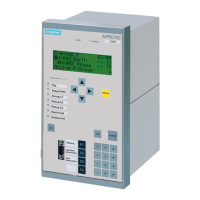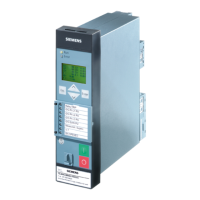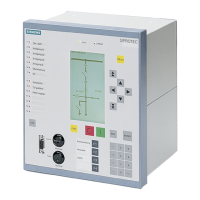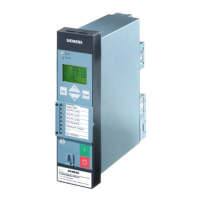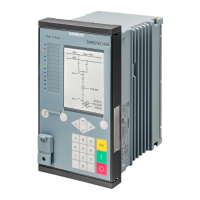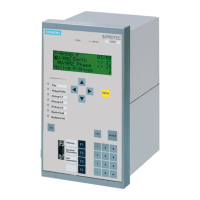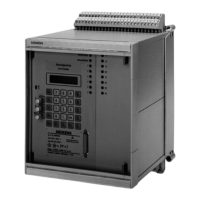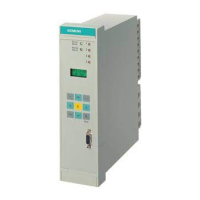But for the user-defined characteristic, you can choose in address 112 and 113 whether to specify only the
pickup characteristic (User Defined PU) or the pickup and the dropout characteristic (User def.
Reset).
Additionally, the superimposed high-current elements 50-2 and 50-3 are available in all these cases. Time
overcurrent protection may be set to Disabled during configuration.
For (sensitive) ground fault detection, address 131Sens. Gnd Fault is used to specify whether this func-
tion is enabled with a definite time (Definite Time) characteristic, inverse time characteristics TOC IEC or
TOC ANSI, one User Defined PU and two logarithmic inverse characteristics, or the entire function is set
to Disabled.
For the intermittent ground fault protection, you can specify the measured quantity (with Ignd, with 3I0
or with Ignd,sens.) to be used by this protection function at address 133 INTERM.EF.
For negative sequence current protection, address 140 46 is used to specify whether the tripping characteris-
tics should be Definite Time or TOC ANSI or TOC IEC, or whether the function is to be Disabled.
For overload protection, address 142 49 allows you to specify whether the thermal replica of the overload
protection will account for a coolant temperature or ambient temperature (With amb. temp.) or not (No
ambient temp), or whether the entire function is Disabled.
For the circuit-breaker maintenance function, several options are available under address 172 52 B.WEAR
MONIT Irrespective of this, the basic functionality of the summation current formation (ΣΙ procedure) is always
active. It requires no further configurations and adds up the tripping currents of the trips initiated by the
protection functions.
When selecting the ΣI
x
-procedure, the sum of all tripping current powers is formed and issued as a reference
value. The 2P procedure continuously calculates the remaining lifespan of the circuit breaker.
With theΙ
2
t-procedure, the square fault current integrals are formed via arc time and are issued as a reference
value.
For more detailed information about the circuit breaker maintenance procedures, see Section 2.17.2 Statistics.
When using trip circuit supervision, address 182 74 Trip Ct Supv allows you to select whether this func-
tion should work with two (2 Binary Inputs) or only one binary input (1 Binary Input) or if the func-
tion is Disabled.
If you want to detect an ambient temperature or a coolant temperature and send the information e.g. to the
overload protection, specify the port to which the RTD-box is connected in address 190 RTD-BOX INPUT. For
7SJ61 the port C (service port) is used for this purpose. The number and transmission type of the temperature
detectors (RTD = Resistance Temperature Detector) can be specified in address 191 RTD CONNECTION: 6 RTD
simplex or 6 RTD HDX (with one RTD-box) or 12 RTD HDX (with two RTD-boxes). Implementation exam-
ples are given in the Appendix (under "Connection Examples"). The setings in address 191 have to t comply
with those at the RTD-box (see Section 2.14.2 Setting Notes, “RTD-box”).
The flexible protection functions can be configured via the FLEXIBLE FUNC. parameter. Up to 20 functions
can be created. This is done by setting checkmarks at the functions. If the checkmark of a function is removed,
all settings and configurations made previously will be lost. After re-selecting the function, all settings and
configurations are in default setting. Setting of the flexible function is done in DIGSI under “Parameters”,
“Additional Functions” and “Settings”“. The configuration is done as usual under “Parameters” and “Configura-
tion”.
Settings
Addr.
Parameter Setting Options Default Setting Comments
103 Grp Chge OPTION Disabled
Enabled
Disabled Setting Group Change Option
104 OSC. FAULT REC. Disabled
Enabled
Enabled Oscillographic Fault Records
2.1.1.3
Functions
2.1 General
SIPROTEC 4, 7SJ61, Manual 29
C53000-G1140-C210-6, Edition 05.2016
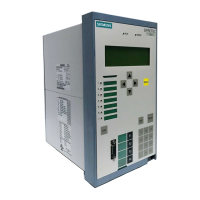
